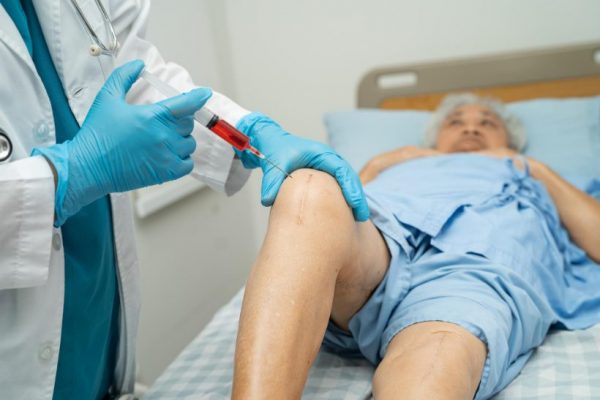What is Gout?
You wake up in the middle of the night, and your big toe feels as if it’s on fire. It’s hot, swollen and so tender that the weight of the blanket on it is nearly intolerable. If so, you might be experiencing an acute attack of gout — or gouty arthritis — a form of arthritis that’s characterized by sudden, severe attacks of pain, redness, and tenderness in joints.
Gout has been recognized for more than 2,000 years, making it one of humankind’s oldest known diseases. In the past, gout was infamously referred to as “the disease of kings” due to its prevalence among the affluent who had a penchant for indulging in luxurious and rich food and beverages. Today, it’s known that gout is a complex disorder that can affect anyone. In fact, it’s a painful problem for more than 2 million Americans.
It’s true that men are more likely to get gout than women are, but women become increasingly susceptible to it after menopause. Fortunately, gout is treatable, and there are ways to keep it from recurring.
Signs and symptoms of Gout
The symptoms of gout are almost always acute, occurring suddenly — often at night — and without warning. They include:
Gout usually affects the large joint of your big toe but can occur in your feet, ankles, knees, hands, and wrists. The pain typically lasts five to 10 days and then stops. Initially, you may feel some discomfort in the affected joint, but this will slowly dissipate over one to two weeks until it returns to normal and; is completely pain-free.
The affected joint or joints become swollen, tender, and red.
Causes of Gout
The cause of gout is an excessive blood level of uric acid, a waste product formed from the breakdown of purines. These are substances found naturally in your body as well as in certain foods, especially organ meats — such as liver, brain, kidney, and sweetbreads — and anchovies, herring, and mackerel. Smaller amounts of purines are found in all meats, fish, and poultry.
Normally, uric acid dissolves in your blood and passes through your kidneys into your urine. But sometimes your body either produces too much or excretes too little of this acid. In that case, uric acid can build up, forming sharp, needle-like crystals in a joint or surrounding tissue that cause pain, inflammation, and swelling.
Another condition that could be caused by crystal deposits is called (pseudogout) or false gout. Pseudogout is distinct from gout in that it contains calcium pyrophosphate dihydrate crystals rather than uric acid crystals. And while pseudogout can affect the big toe, it’s more likely to attack large joints such as your knees, wrists, and ankles.
The following conditions or circumstances can increase the chances you’ll develop high levels of uric acid that may lead to gout:
Excess consumption of alcohol, especially beer, is the most common lifestyle factor that increases the risk of gout. Excess alcohol generally means more than two drinks a day for men and more than one for women. Weighing 30 pounds or more than your ideal weight also increases your risk.
Certain diseases and medications make it more likely that you’ll develop gout. These include untreated high blood pressure (
hypertension) and
chronic medical conditions such as
diabetes, high levels of fat and
cholesterol in the blood (hyperlipidemia), and narrowing of the arteries (arteriosclerosis). Surgery, sudden or severe illness or injury, and immobility due to bed rest also can increase uric acid levels. So can the use of thiazide diuretics — used to treat hypertension — and low-dose aspirin as well as anti-rejection drugs prescribed for people who have undergone a transplant. In addition, chemotherapy treatments for cancer may increase the breakdown of abnormal cells, releasing large amounts of purines into the blood.
Approximately 25% of gout sufferers have a genetic predisposition for this condition due to past family history.
Gout occurs more often in men than it does in women, primarily because women tend to have lower uric acid levels than men. After menopause, however, women’s uric acid levels approach that of men. Men also are more likely to develop gout earlier — usually between the ages of 30 and 50 — whereas women generally develop symptoms after age 50.
Screening and diagnosing Gout
To help diagnose gout, your doctor may withdraw fluid from the affected joint to check for crystals of uric acid in your white blood cells. Other tests may include:
You may have a urine test to measure the amount of uric acid you’re excreting.
Your doctor may have you undergo a blood test to measure the uric acid level in your blood.
How is Gout treated?
For gout attacks, nonsteroidal anti-inflammatory drugs (NSAIDs) such as ibuprofen (Advil, Motrin, and others) may provide relief. Keep in mind that these medications can cause side effects, including stomach pain, bleeding, and ulcers. What’s more, NSAIDs have a ceiling effect — a limit as to how much pain they can control. This means that beyond a certain dosage, they don’t provide additional benefits.
For severe cases, your doctor may prescribe a corticosteroid drug such as prednisone. Although steroids can provide dramatic relief, they can also cause serious side effects, including thinning bones, poor wound healing, and decreased ability to fight infection. Sometimes doctors inject cortisone into the affected joint, but this approach can still cause side effects, and shots are generally limited to no more than three a year.
Once the acute attack is under control, your doctor may recommend preventive treatment to slow the rate at which your body produces uric acid or to increase the rate at which it’s excreted.
Prevention
There’s no sure way to prevent initial or subsequent attacks of gout, but if you already have gout, your doctor may prescribe certain drugs to reduce the risk or lessen the severity of future episodes. These drugs include allopurinol (Zyloprim, Aloprim) and probenecid (Benemid). Taken daily, they slow the rate at which uric acid is produced and speed its elimination from your body. In general, keeping uric acid levels within a normal range is the long-term key to preventing gout.
How to prevent Gout
Lifestyle changes can’t cure gout, but the following measures may help relieve symptoms:
Gradual weight loss will lessen the load on affected weight-bearing joints. Losing weight may also decrease uric acid levels. Avoid fasting or rapid
weight loss because doing so may temporarily raise uric acid levels.
Although medications have decreased the need for severe dietary restrictions in people with gout, some dietary changes can help lessen the severity of gout attacks. They may also serve as an alternative treatment for those who have problems with gout medications. Most experts advise eating no more than 6 ounces of lean meat, poultry, or fish a day for nearly everyone — especially people who have gout because high-protein foods increase the blood level of uric acid. Organ meats (liver, brain, kidney, and sweetbreads), anchovies, herring, and mackerel are particularly high in purines.
Consuming too much alcohol can inhibit the excretion of uric acid, which in turn can lead to gout. Limit alcohol to no more than two drinks a day if you’re a man and one drink a day if you’re a woman or over age 65. During a gout attack, abstaining from alcohol is the best course of action to take.
Fluids help dilute uric acid in your blood and urine.

